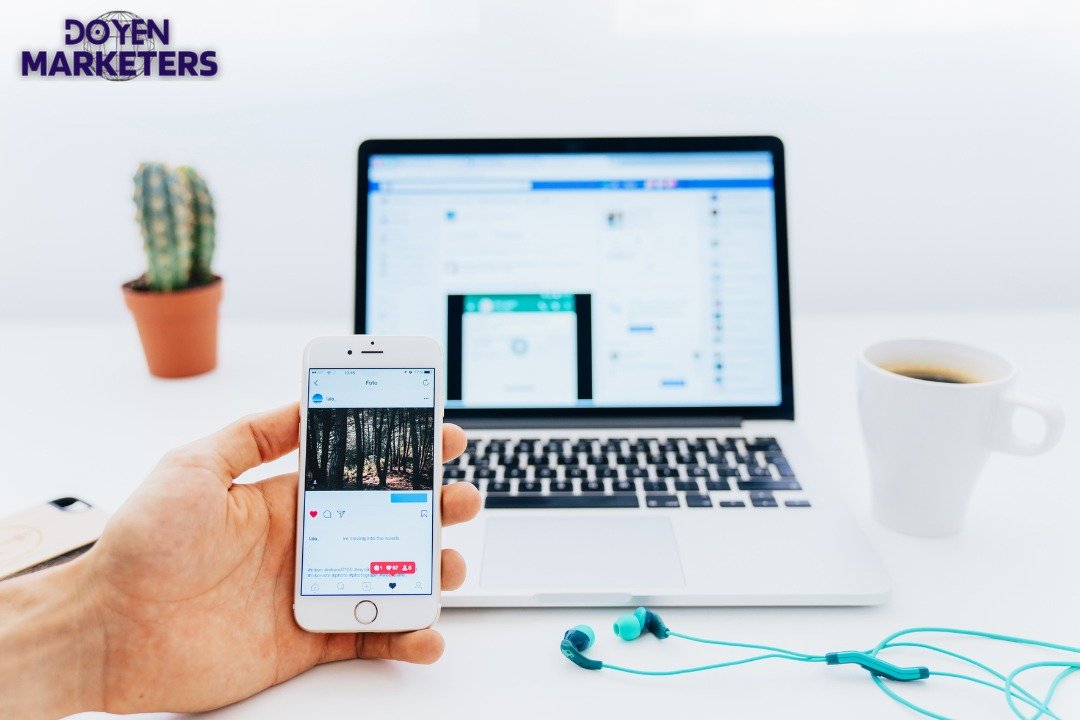Are you looking to maximize your return on investment (ROI) with Facebook ads? If so, you’re not alone. Facebook is a powerful advertising platform that offers a wide range of targeting options and ad formats to help you reach your ideal audience. However, getting the most out of your Facebook ad campaigns requires more than just setting them up and hoping for the best.
In this article, we’ll explore some advanced techniques for maximizing ROI with Facebook ads.
First, we’ll provide an overview of Facebook ads and ROI, including how to measure ROI and what factors can impact it. Then, we’ll cover the basics of setting up a Facebook ad campaign, including selecting your audience, choosing ad formats, and setting a budget.
From there, we’ll dive into some advanced techniques for creating engaging Facebook ads, such as using video and carousel ads, retargeting, and custom audiences. Finally, we’ll discuss how to analyze and adjust your Facebook ads to improve ROI over time.
Key Takeaways
- To maximize ROI with Facebook ads, it’s important to understand how to measure ROI and what factors can impact it.
- Setting up a Facebook ad campaign involves selecting your audience, choosing ad formats, and setting a budget.
- Advanced techniques for maximizing ROI with Facebook ads include creating engaging ads, retargeting, and custom audiences, and analyzing and adjusting your ads over time.
Understanding Facebook Ads and ROI
Table of Contents
- 1 Understanding Facebook Ads and ROI
- 2 Setting Up Your Facebook Ad Campaign
- 3 Creating Engaging Facebook Ads
- 4 Advanced Techniques for Maximizing ROI
- 5 Analyzing and Adjusting Your Facebook Ads
- 6 Conclusion
- 7 Frequently Asked Questions
- 7.1 What are some effective Facebook optimization tools?
- 7.2 How can I increase my ROAS with Facebook ads?
- 7.3 What are the different types of optimization goals on Facebook?
- 7.4 What is a good ROI for Facebook ads?
- 7.5 How can I maximize my Facebook ad reach?
- 7.6 How long does it take for Facebook ads to optimize?
Facebook Ads is a powerful advertising platform that allows you to reach your target audience with precision. To maximize your ROI with Facebook Ads, it is essential to understand how the platform works and how to measure your success.
How Facebook Ads Work
Facebook Ads work by displaying your ads to users who fit your target audience criteria. You can target users based on demographics, interests, behaviors, and more. You can also retarget users who have interacted with your website or Facebook page.
Facebook Ads use an auction system to determine which ads to display to users. The auction takes into account factors such as bid amount, ad quality, and relevance score. The ad with the highest total value wins the auction and gets displayed to the user.
Measuring ROI with Facebook Ads
To measure your ROI with Facebook Ads, you need to track your conversions and calculate your cost per conversion. A conversion can be any action that you define as valuable, such as a purchase, lead form submission, or website visit.
Facebook Ads provides several metrics to help you track your conversions, including:
- Cost per conversion
- Conversion rate
- Return on ad spend (ROAS)
- Lifetime value (LTV)
By tracking these metrics, you can optimize your ad campaigns to increase your ROI. For example, you can adjust your targeting, bidding, and ad creative to improve your conversion rate and lower your cost per conversion.
Understanding how Facebook Ads work and how to measure your ROI is essential for maximizing your success on the platform. By using advanced techniques and tracking your metrics, you can increase your ROI and achieve your advertising goals.
Setting Up Your Facebook Ad Campaign
When setting up your Facebook ad campaign, there are three key areas you need to focus on: choosing your objective, targeting your audience, and budgeting and scheduling. By getting these areas right, you can maximize your ROI and achieve your advertising goals.
Choosing Your Objective
The first step in setting up your Facebook ad campaign is to choose your objective. Facebook offers a range of objectives to choose from, including:
- Brand awareness
- Reach
- Traffic
- App installs
- Video views
- Lead generation
- Conversions
- Catalog sales
- Store traffic
Choosing the right objective will depend on your advertising goals. For example, if you want to drive traffic to your website, you would choose the “Traffic” objective. If you want to generate leads, you would choose the “Lead Generation” objective.
Targeting Your Audience
Once you’ve chosen your objective, the next step is to target your audience. Facebook allows you to target your ads based on a range of factors, including:
- Location
- Age
- Gender
- Interests
- Behaviors
- Connections
- Custom audiences
- Lookalike audiences
Targeting the right audience is crucial to the success of your Facebook ad campaign. By targeting the right people, you can increase the likelihood of them taking the desired action, whether that’s clicking on your ad, filling out a form, or making a purchase.
Budgeting and Scheduling
The final step in setting up your Facebook ad campaign is to set your budget and schedule. Facebook offers a range of budgeting options, including:
- Daily budget
- Lifetime budget
You can also set a schedule for your ads to run, choosing specific days and times.
When setting your budget and schedule, it’s important to consider your advertising goals, as well as your audience and competition. By setting a realistic budget and schedule, you can maximize your ROI and achieve your advertising goals.
In summary, setting up your Facebook ad campaign involves choosing the right objective, targeting the right audience, and setting a realistic budget and schedule. By getting these areas right, you can maximize your ROI and achieve your advertising goals.
You may also read our guide about How to Become a Digital Creator on Facebook
Creating Engaging Facebook Ads
Designing Your Ad
Designing your Facebook ad is critical to its success. The ad should be visually appealing, eye-catching, and relevant to the audience you are targeting. Here are some tips for designing an engaging Facebook ad:
- Use high-quality images or videos that are relevant to your product or service.
- Choose colors that stand out and complement your brand.
- Keep the text concise and to the point.
- Use contrasting colors for the text and background to make it easier to read.
- Avoid using too many images or text that can overwhelm the viewer.
Crafting Your Ad Copy
Crafting your ad copy is just as important as designing the ad itself. Your ad copy should be compelling, relevant, and concise. Here are some tips for crafting an engaging Facebook ad copy:
- Use a clear and concise headline that grabs the viewer’s attention.
- Highlight the benefits of your product or service and how it can solve the viewer’s problem.
- Use a strong call-to-action that encourages the viewer to take action.
- Keep the text short and sweet, using bullet points or short paragraphs to make it easier to read.
- Use language that resonates with your target audience and speaks to their needs and desires.
By following these tips, you can create engaging Facebook ads that will capture the attention of your target audience and maximize your ROI.

Advanced Techniques for Maximizing ROI
When it comes to Facebook Ads, there are a few advanced techniques that can help you maximize your ROI. In this section, we’ll cover three of the most effective methods: utilizing Facebook Pixel, leveraging Lookalike Audiences, and implementing A/B testing.
Utilizing Facebook Pixel
Facebook Pixel is a powerful tool that allows you to track user behavior on your website. By placing a small piece of code on your website, you can track conversions, optimize ads, and retarget users who have already shown interest in your products or services.
To get the most out of Facebook Pixel, make sure you’re tracking all of the relevant events on your website, such as page views, add to carts, and purchases. You can also use Pixel data to create custom audiences and lookalike audiences, which we’ll cover in the next section.
Leveraging Lookalike Audiences
Lookalike Audiences are a great way to expand your reach and find new customers who are similar to your existing ones. To create a lookalike audience, you’ll need to upload a list of your current customers or website visitors to Facebook. Facebook will then use its algorithms to find users who have similar interests, demographics, and behaviors.
To get the best results with lookalike audiences, make sure your source audience is large enough and high-quality. You can also experiment with different types of lookalike audiences, such as those based on website visitors or email subscribers.
Implementing A/B Testing
A/B testing is a powerful technique for optimizing your Facebook Ads and improving your ROI. With A/B testing, you create two or more versions of your ad and test them against each other to see which one performs better.
To get the most out of A/B testing, make sure you’re only testing one variable at a time, such as the ad copy or the image. You should also test your ads for a significant amount of time and make sure you have enough data to draw meaningful conclusions.
By utilizing Facebook Pixel, leveraging Lookalike Audiences, and implementing A/B testing, you can take your Facebook Ads to the next level and maximize your ROI.
Analyzing and Adjusting Your Facebook Ads
As you run Facebook ads for your business, it’s important to regularly analyze and adjust your campaigns to ensure you’re getting the most out of your investment. In this section, we’ll cover two key aspects of analyzing and adjusting your Facebook ads: interpreting Facebook ad metrics and optimizing your ads for better ROI.
Interpreting Facebook Ad Metrics
To understand how your Facebook ads are performing, you’ll need to analyze various metrics that Facebook provides. Here are some key metrics to pay attention to:
- Click-through rate (CTR): The percentage of people who clicked on your ad after seeing it.
- Cost per click (CPC): The average cost you pay for each click on your ad.
- Conversion rate: The percentage of people who completed a desired action, such as making a purchase or filling out a form, after clicking on your ad.
- Cost per conversion: The average cost you pay for each conversion.
By regularly monitoring these metrics, you can identify which ads are performing well and which ones need improvement. For example, if you have a low CTR, you may need to revise your ad copy or imagery to make it more compelling.
Optimizing Your Ads for Better ROI
Once you’ve analyzed your Facebook ad metrics, it’s time to optimize your ads for better ROI. Here are some tips to help you do that:
- Target the right audience: Make sure you’re targeting the right audience for your ads. Use Facebook’s targeting options to narrow down your audience based on demographics, interests, behaviors, and more.
- Test different ad formats: Experiment with different ad formats, such as image ads, video ads, and carousel ads, to see which ones perform best for your business.
- Use retargeting: Retargeting allows you to show ads to people who have already interacted with your business, such as by visiting your website or adding items to their cart. This can be a highly effective way to drive conversions.
- Adjust your bids: If you’re not getting the results you want, try adjusting your bids. You may need to increase your bid to get your ad in front of more people, or decrease it to get a better ROI.
By following these tips and regularly analyzing your Facebook ad metrics, you can maximize your ROI and get the most out of your Facebook advertising investment.
Conclusion
Congratulations! You have learned some advanced techniques for maximizing your ROI with Facebook ads. By implementing these strategies, you can take your ad campaigns to the next level and achieve even greater success.
Remember to always keep your target audience in mind and tailor your ads to their interests and behaviors. Utilize Facebook’s powerful targeting options to reach the right people at the right time.
Don’t be afraid to experiment with different ad formats and placements to see what works best for your business. Use A/B testing to compare different versions of your ads and optimize your campaigns for maximum performance.
Finally, keep an eye on your metrics and adjust your strategy as needed. Use Facebook’s robust analytics tools to track your ad performance and make data-driven decisions about your campaigns.
With these advanced techniques, you can unlock the full potential of Facebook ads and achieve impressive results for your business. Good luck!
Frequently Asked Questions
What are some effective Facebook optimization tools?
Facebook offers a variety of optimization tools to help you maximize your ROI. Some of the most effective tools include the Facebook Pixel, Custom Audiences, and Lookalike Audiences. These tools allow you to track user behavior, target specific audiences, and expand your reach to similar users.
How can I increase my ROAS with Facebook ads?
There are several strategies you can use to increase your ROAS with Facebook ads. One effective approach is to focus on targeting high-value audiences, such as those who have already engaged with your brand or those who have made a purchase in the past. Additionally, you can experiment with different ad formats, such as video ads or carousel ads, to see which ones perform best for your business.
What are the different types of optimization goals on Facebook?
Facebook offers a range of optimization goals to help you achieve your advertising objectives. These goals include website conversions, app installs, lead generation, and video views, among others. By selecting the right optimization goal for your campaign, you can ensure that your ads are being shown to users who are most likely to take the desired action.
What is a good ROI for Facebook ads?
The ROI you can expect from your Facebook ads will depend on a variety of factors, including your industry, your target audience, and your advertising budget. However, a good benchmark for ROI is typically around 3:1, meaning that for every dollar you spend on ads, you can expect to generate three dollars in revenue.
How can I maximize my Facebook ad reach?
To maximize your Facebook ad reach, it’s important to focus on targeting the right audience. You can use Facebook’s targeting tools to reach users based on factors such as age, gender, location, interests, and behaviors. Additionally, you can experiment with different ad formats and placements to see which ones perform best for your business.
How long does it take for Facebook ads to optimize?
The amount of time it takes for Facebook ads to optimize will depend on a variety of factors, including your ad budget, your target audience, and your optimization goal. In general, it’s recommended that you allow your ads to run for at least a week before making any significant changes, as this will give Facebook’s algorithms time to learn and optimize your campaign.















